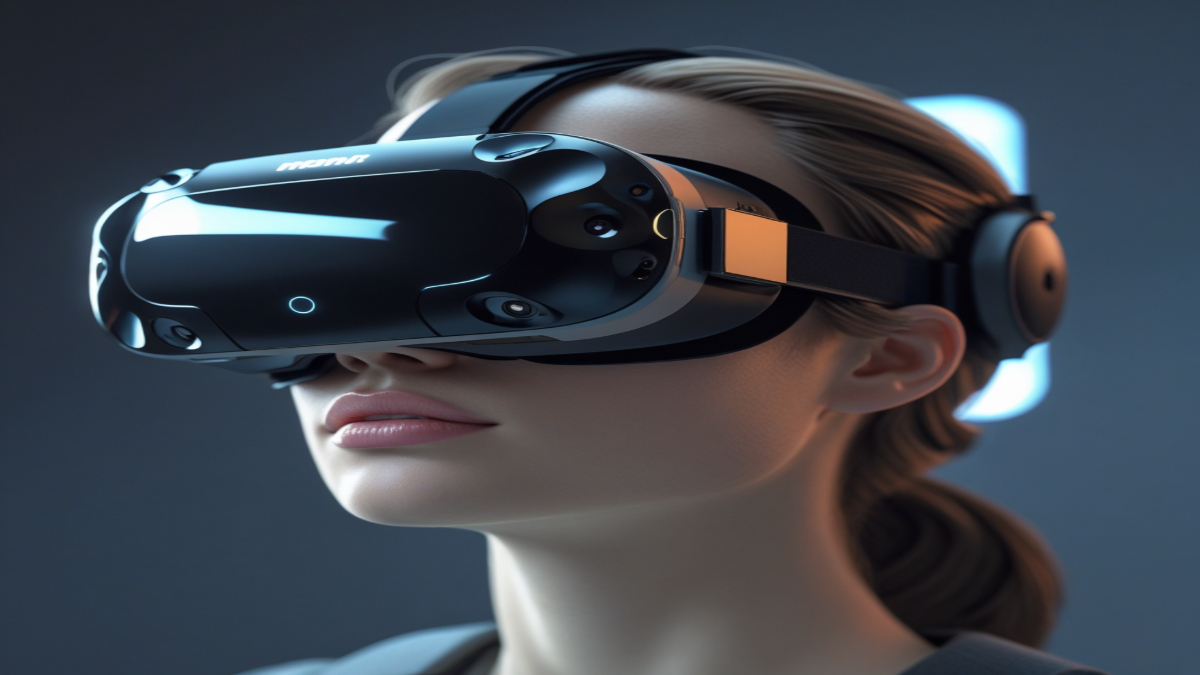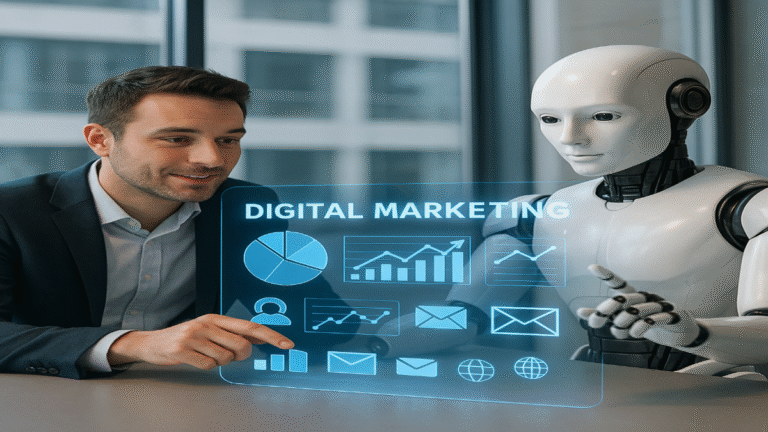Introduction
Virtual Reality (VR) has evolved far beyond its gaming origins to become a powerful business tool transforming how brands connect with customers, train employees, and drive innovation. In 2025, as VR technology becomes more accessible and sophisticated, forward-thinking marketers are leveraging immersive experiences to create memorable brand interactions and solve real business challenges. This comprehensive guide explores the practical applications of VR for brands in today’s digital marketing landscape.
The Evolution of VR in Marketing: Where We Stand in 2025
The virtual reality landscape has undergone remarkable transformation in recent years. According to recent market research, the global VR market is expected to reach $339.29 billion by 2033, driven by increasing applications across various industries. With the number of active VR users worldwide reaching 171 million by the end of 2024 (up from 58.9 million in 2021), brands now have access to a significant and growing audience through this technology HQSoftware.
This growth is fueled by several key factors:
- Increasing affordability of VR hardware
- Development of more user-friendly interfaces
- Expanding library of engaging VR content
- Integration with other technologies like AI and 5G
For digital marketers, VR presents unique opportunities to create immersive brand experiences that foster deeper connections with consumers. As we move through 2025, understanding the practical applications of VR for businesses is essential for staying competitive in the evolving digital landscape.
1. Virtual Showrooms and Product Visualization
One of the most powerful applications of VR for brands is in product visualization and virtual showrooms. This technology enables customers to interact with products in a three-dimensional space, bridging the gap between online and offline shopping experiences.
Try-Before-You-Buy Experiences
VR allows brands to offer “try-before-you-buy” experiences that can be as persuasive as traditional in-store shopping. Customers can:
- Visualize furniture in their homes before purchasing
- Try on clothing and accessories virtually
- Explore product features in detail
- Test drive vehicles without visiting a dealership
For example, Lowe’s home improvement stores have implemented VR solutions that allow customers to design their perfect bathroom or kitchen and then, using VR, walk into the finished space and experience it as a kind of test drive. According to their testing, customers who experienced VR instruction had 36% better recall compared to those who watched YouTube videos Business.com.
Mobile AR/VR Apps for Accessibility
With the proliferation of smartphones, AR/VR apps are now accessible to a wide audience without requiring specialized equipment. These mobile applications allow brands to offer immersive experiences to customers anytime, anywhere.
IKEA’s mobile app exemplifies this approach, enabling customers to visualize how furniture pieces will look in their homes using AR technology. This convenience factor has made AR/VR product visualization accessible to more brands, regardless of size or industry Lounge Lizard.
2. Immersive Brand Storytelling
While traditional marketing tells consumers about a brand, VR allows customers to experience the brand’s story firsthand. This creates powerful emotional connections and memorable experiences that traditional media cannot match.
Creating Memorable Brand Narratives
VR excels at storytelling by transporting consumers into virtual worlds that embody brand values and vision. For instance:
- Tourism brands can offer virtual tours of destinations
- Automotive companies can create virtual test drives
- Fashion brands can showcase their creative process
Luxury brands have been particularly successful with this approach. Gucci launched the “Gucci Garden Experience” on the Roblox gaming platform, creating a virtual space that allowed users to explore and purchase exclusive digital items. According to Vogue Business, this initiative significantly increased user engagement and generated extensive media coverage, positioning Gucci as a cutting-edge brand embracing emerging technologies Marketinlife.
Virtual Events and Product Launches
VR has transformed how brands launch products and host events, enabling global participation without geographical limitations. Unlike physical events restricted by venue capacity and location, VR product launches offer:
- Global accessibility for attendees worldwide
- Interactive environments for product exploration
- Real-time customization options
- Lower environmental impact by eliminating travel needs
Toyota partnered with Immersive Studio to create an interactive virtual world for the launch of the Aygo X Undercover edition. This VR experience allowed users to explore a custom-built 3D environment that reflected the car’s unique features and design aesthetics. The campaign resulted in content completion rates 19% above benchmark and contributed to increased brand reputation, with +1.3 points in brand strength and +9 points in brand choice Immersive Studio.
3. Employee Training and Development
VR is revolutionizing corporate training by providing immersive, hands-on learning experiences that improve knowledge retention and skill development. This application has proven particularly valuable for companies with large, geographically dispersed workforces.
Enhanced Learning Outcomes
VR-based training has demonstrated significant advantages over traditional methods:
- Improved knowledge retention through experiential learning
- Increased employee engagement and participation
- Ability to practice skills in a safe, controlled environment
- Consistent training experiences across locations
Walmart has been a pioneer in utilizing VR for employee training across its vast network of stores. Andy Trainor, VP of U.S. Learning for Walmart, notes that VR training has transformed how they prepare their 1 million+ in-store associates.
“What the VR has allowed us to do is start to create confidence in ways that were really hard to do,” explains Trainor. “Whether you’re having conversations with customers or it’s diversity inclusion, you can create situations both positive and negative in the VR world that allow you to practice in a safe environment and learn from what you did.” Walmart has observed higher associate engagement, better knowledge retention, and improved customer service metrics since implementing VR training Strivr.
Cost-Effective Training Solutions
VR can significantly reduce training costs, particularly for complex or hazardous tasks:
- Eliminates travel expenses for training sessions
- Reduces equipment costs through virtual simulations
- Minimizes downtime by training employees faster
- Allows for unlimited practice without additional costs
Walmart’s experience with VR training for new technology deployment illustrates these benefits. When rolling out new “pickup towers” across stores, they previously needed to send 4-5 associates to each store for 4-6 weeks to train staff. By creating VR training modules, they now simply send an Oculus headset to each location, saving significant travel costs and time while maintaining or improving training quality Strivr.
4. Customer Experience Enhancement
In 2025, providing exceptional customer experiences is a key differentiator for brands. VR offers unique ways to elevate these experiences through personalization, engagement, and innovative service approaches.
Interactive Customer Engagement
VR enables brands to create interactive experiences that captivate customers and build emotional connections:
- Gamified brand interactions with rewards and challenges
- Multi-sensory experiences engaging multiple senses
- Personalized virtual shopping journeys
- Interactive product demonstrations
Barclays partnered with Immersive Studio to create an interactive VR experience where users could explore the financial institution’s offerings in an engaging virtual environment. This approach strengthened customer understanding and loyalty by transforming potentially complex financial information into an accessible, interactive journey Immersive Studio.
Personalized Customer Journeys
VR allows brands to create highly customized experiences tailored to individual preferences:
- Dynamic environments that adapt to user behavior
- Customizable product configurations in real-time
- Personalized recommendations based on interactions
- Tailored content based on customer history
By analyzing user behavior in virtual environments, brands can adapt experiences to suit individual preferences. For example, a travel company could offer virtual tours that dynamically adjust based on the user’s past searches and interests, creating more relevant experiences that drive conversion and loyalty Immersive Studio.
5. Virtual Collaboration and Design
As remote work continues to be prevalent in 2025, VR provides powerful solutions for collaborative work and design processes, regardless of physical location.
Remote Collaboration Enhancements
VR transforms remote collaboration by creating shared virtual spaces where team members can:
- Interact with 3D models and prototypes
- Conduct virtual meetings with realistic presence
- Collaborate on designs in real-time
- Share ideas in immersive environments
These capabilities are particularly valuable for design teams, architects, and product developers who need to visualize and iterate on complex three-dimensional concepts collaboratively.
Streamlined Product Development
VR accelerates the product development process by enabling:
- Virtual prototyping without physical materials
- Real-time design modifications and testing
- User testing in simulated environments
- Stakeholder feedback on virtual models
Ferrari has leveraged VR in its vehicle customization and design process through its Ferrari Tailor Made program. Customers can customize every aspect of their car in a virtual environment before production starts, visualizing colors, materials, and details in real-time. According to a report by Car and Driver, this approach has reduced production times by decreasing the need for subsequent changes and adjustments while improving customer satisfaction Marketinlife.
Implementing VR in Your Marketing Strategy
While the benefits of VR are compelling, implementing this technology effectively requires careful planning and consideration of several factors.
Getting Started with VR Marketing
For brands just beginning their VR journey, consider these steps:
- Identify clear business objectives: Determine what you want to achieve with VR, whether it’s increasing engagement, improving training, or enhancing customer experience.
- Start with manageable projects: Begin with smaller, focused VR initiatives before scaling up. For example, create a simple product visualization tool or a virtual tour of your facilities.
- Choose the right technology partners: Work with experienced VR developers and platforms that understand your industry and business goals.
- Focus on content quality: The success of VR experiences depends heavily on the quality and relevance of the content. Invest in creating compelling, valuable experiences.
- Measure and iterate: Establish clear metrics to evaluate the performance of your VR initiatives and continuously improve based on user feedback and data.
Overcoming VR Implementation Challenges
Brands implementing VR should be aware of potential challenges:
Technical and Cost Considerations
- Initial investment in VR development can be significant
- Ensuring compatibility across different devices and platforms
- Technical expertise required for ongoing maintenance
User Accessibility
- Not all customers have access to VR hardware
- Varying levels of technical familiarity among users
- Physical limitations that may impact VR usage
Content and Experience Quality
- Maintaining brand authenticity in virtual environments
- Creating genuinely valuable experiences that drive results
- Balancing innovation with user-friendly design
To address these challenges, consider offering web-based VR experiences that don’t require specialized hardware, creating scalable content that works across multiple platforms, and focusing on solving real customer pain points rather than implementing VR for novelty alone.
Future Trends: What’s Next for VR in Marketing
As we look beyond 2025, several emerging trends are set to further transform how brands use VR in their marketing strategies.
Integration with Artificial Intelligence
The combination of VR and AI will create more intelligent and responsive virtual experiences:
- AI-powered virtual assistants guiding customers through VR experiences
- Dynamic content adaptation based on user behavior and preferences
- Predictive analytics to optimize VR marketing campaigns
- Hyper-personalized virtual environments
According to Gartner analysis, by 2026, more than 80% of luxury brands will integrate AI into their VR platforms to offer highly personalized and user-centric experiences Marketinlife.
Metaverse and Virtual Commerce
The metaverse concept continues to evolve, offering new opportunities for brands:
- Persistent virtual spaces where brands can establish presence
- Virtual storefronts and shopping districts
- Digital assets and virtual goods as new revenue streams
- Community building in shared virtual environments
Morgan Stanley projects that the metaverse market in the luxury sector alone could reach $50 billion by 2030, driven by growing demand for immersive digital experiences Marketinlife.
Multi-Sensory Experiences
Advances in haptic technology and other sensory interfaces will enhance the immersiveness of VR:
- Haptic feedback for tactile sensations
- Olfactory components for scent experiences
- Advanced spatial audio for immersive soundscapes
- Temperature and environmental effects
According to Accenture, multi-sensory experiences will be a key differentiator in the luxury sector, with over 60% of luxury consumers showing significant interest in technologies that offer this extra layer of realism and emotional connection Marketinlife.
Conclusion: VR as a Strategic Marketing Asset
As we navigate through 2025, VR has firmly established itself as more than just a technological novelty—it’s become a strategic marketing asset that enables brands to connect with audiences in unprecedented ways. The technology delivers tangible business benefits across customer experience, employee training, product development, and brand storytelling.
For digital marketers, the question is no longer whether to incorporate VR into marketing strategies, but how to do so most effectively. Brands that thoughtfully implement VR to solve real business challenges and enhance customer experiences will gain significant competitive advantages in an increasingly digital marketplace.
By starting with clear objectives, focusing on valuable content, and continuously iterating based on performance data, marketers can harness the power of VR to create memorable brand experiences that drive engagement, loyalty, and ultimately, business growth in 2025 and beyond.
Whether you’re a small business taking your first steps into VR marketing or an enterprise looking to scale your immersive experiences, the time to explore and implement virtual reality in your marketing strategy is now.




